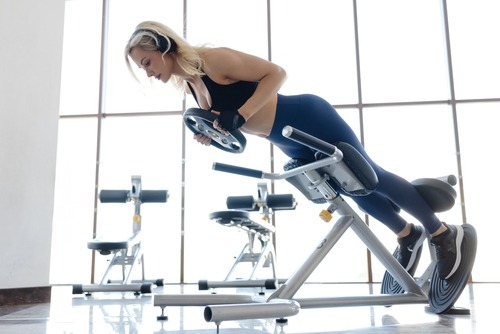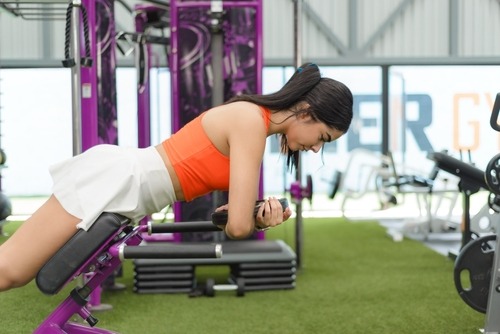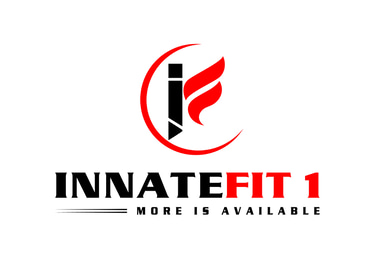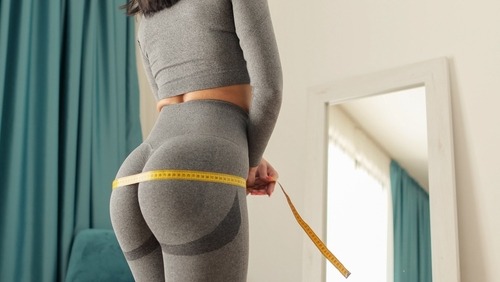Visit Innatefit1.com for exercise wear and equipment!!!
Beyond Hip Thrusts: The 5 Most Effective Glute–Ham Tie-In Exercises Backed by Exercise Science
Discover the five most effective glute–ham tie-in exercises, backed by exercise science, that go beyond hip thrusts to build strength and shape.
WOMEN'S HEALTHGLUTE TRAININGBEGINNERS FITNESS TIPSWORKOUTSCONFIDENCE BUILDINGFITNESS TIPSWOMEN'S FITNESS TIPSSTRENGTH TRAINING
Joseph Battle
11/8/20256 min read


Introduction
The glute–ham tie-in—where the gluteus maximus blends into the biceps femoris and semimembranosus/semitendinosus—is the engine room of hip extension, sprint acceleration, and aesthetic lower-body definition. While hip thrusts dominate social feeds, the best results come from multi-angle hip-dominant work that loads the long hip extensor moment arm, challenges end-range hip extension, and progresses through tempo, range, and stability. Below, we present the five most effective exercises beyond hip thrusts, complete with coaching cues, programming progressions, and evidence-aligned rationale to maximize your results.
Romanian Deadlift (RDL): The Gold Standard for Long-Lever Hip Extension
Why it works: The RDL strategically loads the posterior chain with a long hamstring length and a neutral spine, placing high mechanical tension on the glute–ham complex through the mid-to-end range of hip flexion. Its eccentric focus cultivates tendon stiffness, hamstring length-tension capacity, and glute drive without spinal compression peaks seen in heavier conventional pulls.
Form keys (we coach it this way):
Keep the bar close to the thighs, lats locked, ribs stacked.
Soft knees (about 10–20°), hinge back until hamstrings grip; avoid lumbar rounding.
Pause for 1 second just above the point where the form would break, then drive the hips forward.
Finish with glutes, not the lower back, and avoid overextension.
Programming:
Primary strength: 4–5 sets × 4–6 reps, tempo 3–1–1–0, rest 2–3 min.
Hypertrophy: 3–4 sets × 6–8 reps, tempo 3–1–1–0, rest 90–120 sec.
Progressions: Deficit RDL (elevate forefoot 1–2 cm), pause-at-mid-shin RDL, single-leg RDL for anti-rotation stability.
Common fixes: If you feel it in your low back, shorten range, add a mid-shin pause, and own the hinge before loading.
45-Degree Hip Extension (Back Extension) — Glute-Dominant Setup
Why it works: Properly executed at 45°, this variation keeps constant tension on the hip extensors with minimal knee contribution. By posteriorly tilting the pelvis at the top and rounding the upper back slightly (thoracic flexion), you shift effort out of erectors and into the glute–ham tie-in.
Form keys:
Set the pad just below the pelvis so you can hinge freely at the hips.
Tuck chin, slightly round upper back, then hinge down under control.
Drive up by squeezing glutes first, finish with posterior pelvic tilt without hyperextending.
Use a dumbbell or plate held to the chest for load, or a band anchored below the machine to amplify end-range glute tension.
Programming:
Hypertrophy emphasis: 3–4 sets × 10–15 reps, tempo 2–0–2–1, rest 60–90 sec.
Glute bias finisher: 2–3 sets × 15–20 reps with 1–2 sec peak squeeze.
Progressions: Band-overload, offset load (one-arm hug), isometric 20–30 sec holds at the top for glute burn.
Pro tip: If you feel hamstrings cramp early, soften the knees and think “tailbone to ribcage” at lockout.
Glute–Ham Raise (GHR) on GHD: Dual-Action Tie-In Dominator
Why it works: The GHR trains the hamstrings at both the knee (flexion) and hip (extension), mirroring sprint mechanics and stressing the distal and proximal hamstring fibers while the glutes finish hip extension. This closed-chain demand creates exceptional tie-in tension and eccentric strength.
Form keys:
Start with the hips slightly forward of the pad, the torso long, and the ribs down.
Lower under control until torso is parallel; curl the knees while driving the hips forward to maintain a straight line from the knees through the shoulders.
Finish with glutes and a subtle posterior pelvic tilt; avoid lumbar yank.
Programming:
Strength (bodyweight): 4–5 sets × 3–5 reps, slow eccentrics (3–5 sec).
Hypertrophy: 3–4 sets × 6–8 reps; scale with band assistance or load (plate/vest).
Eccentric blocks: 3 sets × 3–5 negatives (5–8 sec down), use hands on pads to assist the up-phase.
Progressions & regressions:
Start with hip-extension-only reps on the GHD; progress to full GHR.
Use partner-assisted or band-assisted versions to groove full ROM.
Cable Pull-Through: Constant Tension, End-Range Bias
Why it works: The cable line provides horizontal resistance that peaks at end-range hip extension, right where many lifters disengage. This makes the pull-through ideal for teaching continuous glute drive and feeling the tie-in without spinal loading.
Form keys:
Stand facing away from the cable stack, with the rope between your legs.
Walk forward to pre-tension the stack, hinge back until the hamstrings load.
Drive hips forward hard, finish with a 1–2 sec glute squeeze and posterior pelvic tilt.
Keep ribs stacked; no rib flare or lumbar extension.
Programming:
Hypertrophy/skill: 3–4 sets × 10–15 reps, tempo 2–0–2–1, rest 60–90 sec.
Metabolic finisher: 2–3 sets × 20–25 reps or 45–60 sec continuous work.
Micro-progressions: Add half-reps at the end range, or a 2–3 sec isometric squeeze each rep.
Common fixes: If you feel quads, you are squatting, not hinging. Push hips back, keep shins vertical.
Bulgarian Split Squat (Long-Stride, Glute-Biased) or Step-Back Lunge
Why it works: Though a single-leg squat pattern, the long-stride Bulgarian split squat with a slight forward torso significantly biases hip extension over knee extension. The rear-foot elevation deepens hip flexion on the front leg, enhancing glute stretch-mediated hypertrophy and loading the proximal hamstring.
Form keys:
Take a long stance, front shin near vertical, torso slightly forward.
Descend until your front hip is deeply flexed; you should feel glute tension at the bottom.
Drive through the whole foot, finish with glutes without hyperextending.
Hold dumbbells at sides or in front rack for core demand.
Programming:
Hypertrophy: 3–4 sets × 8–12 reps per leg, tempo 3–1–1–0, rest 90 sec.
Strength: 4–5 sets × 5–6 reps, add 2-sec pauses at the bottom.
Swap to step-back lunges on days needing lower axial fatigue.
Progressions: Deficit front foot, 1½-rep pattern (down-half-down-up), or B-stance for intermediate stability work.
Technique Priorities for Maximum Glute–Ham Tie-In
Own the hinge: We coach hips back, shins quiet, ribs stacked. If your knees drift forward, tension shifts to quads.
Posterior pelvic tilt at lockout: A subtle tuck engages glutes and prevents low-back takeover.
End-range intent: Add isometric squeezes or band-overload at full hip extension to build mind-muscle connection at the tie-in.
Eccentric control: 3–5 second negatives induce high mechanical tension and favorable remodeling.
Range before load: Progress ROM (deficits, pauses) before chasing heavier weights.
Weekly Programming Template (Glute–Ham Tie-In Emphasis)
Day 1 — Hinge Strength (Heavy):
Romanian Deadlift — 5×5, tempo 3–1–1–0, rest 2–3 min
GHR — 4×5–6, 3–5 sec eccentrics
45° Hip Extension (glute focus) — 3×12–15, 1–2 sec squeeze
Accessory: Standing calf raise or anti-rotation core — 3×12–15
Day 2 — Single-Leg & End-Range (Moderate):
Bulgarian Split Squat (long-stride) — 4×8–10/leg, 3–1–1–0
Cable Pull-Through — 3×12–15, 2–0–2–1
Single-Leg RDL — 3×8/leg, 2–1–1–0
Finisher: 45–60 sec cable pull-throughs or banded hip extensions
Day 3 — Posterior Chain Capacity (Optional):
Kettlebell Swings — 8×15 on 45-sec clock (skill-based power)
Back Extension (bodyweight tempo) — 3×20, 2–0–2–1
Hamstring Curl (lying or Nordic regressions) — 3×8–12
Mobility/Recovery: 90/90 hip switches, hamstring flossing, posterior-chain breathing
Progressions and Periodization
Weeks 1–4 (Base): Emphasize tempo, pauses, and range; moderate loads.
Weeks 5–8 (Overload): Progress load on RDL and Bulgarian split squat; maintain end-range isometrics on pull-throughs.
Weeks 9–12 (Intensification): Reduce volume slightly; chase top sets (RPE 8–9) on hinges and weighted GHR; finish with high-rep back extensions for metabolic stress.
Deload (7–10 days): Cut volume by 40–50%, keep movement patterns, and then re-ramp.
Troubleshooting: Feel It Where It Matters
Back dominates: You are extending the spine instead of the hips. Exhale at lockout, tuck slightly, and keep ribs stacked.
Hamstring cramps early: Add 2–3 warm-up sets of glute bridges with 2-sec squeezes, then return to the hinge.
Knee pain in Bulgarians: Lengthen stride, keep the front shin vertical, and elevate the forefoot 1–2 cm to bias the hip.
Can’t find glutes at end range: Add band-over-hip on 45° back extensions or band-assisted pull-throughs for peak contraction.
Recovery, Mobility, and Accessory Work
Daily micro-dose: 5 minutes of 90/90 transitions, hip airplane holds, and hamstring sliders.
Breathing resets: Supine 90-90 breathing with light posterior pelvic tilt restores hip position after heavy hinges.
Walking (8–12k steps/week) enhances blood flow and posterior chain recovery.
Protein and sleep: Aim for ~0.7–1.0 g/lb bodyweight protein and 7–9 hours of sleep to support hypertrophy and connective-tissue remodeling.
Sample 10-Minute Finisher for the Tie-In (On Lower-Body Days)
EMOM 10 (Every Minute on the Minute):
Odd minutes: Cable Pull-Throughs × 15 (1–2 sec squeeze at top)
Even minutes: 45° Hip Extension × 12 (glute-biased; upper back slightly rounded)
If you complete all reps with perfect control, add a 5–10% load next session.
The Bottom Line
To develop a powerful, aesthetic glute–ham tie-in, train beyond hip thrusts with long-lever hinges, end-range cable work, dual-action GHRs, glute-biased back extensions, and long-stride single-leg patterns.
Prioritize tempo-controlled eccentrics, posterior pelvic tilt at lockout, and consistent progression across range, load, and stability. Applied with intent, these five exercises deliver transfer to sport, posture, and the defined tie-in you are after.






